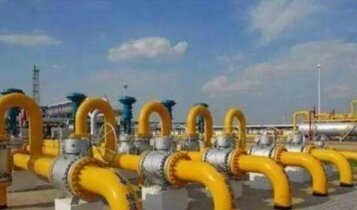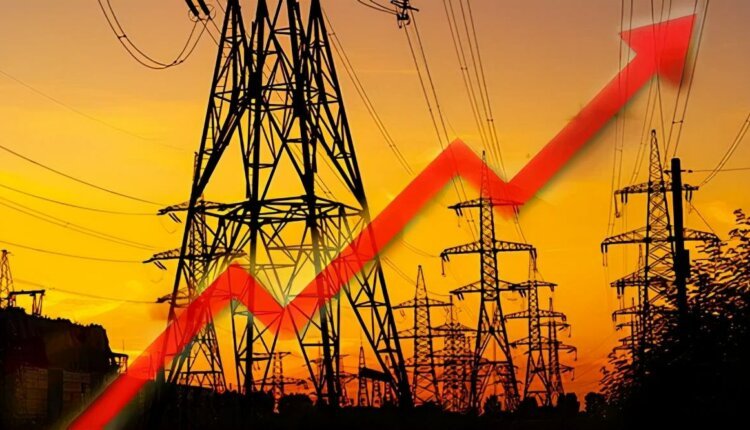About Rising Natural Gas Prices, The U.S. Energy Information Administration (EIA) said in an analysis report on Friday that the increase in fuel prices in the United States in 2021, especially the increase in natural gas prices, will drive up wholesale electricity prices in all regions.
Rising Natural Gas Prices is main issue as, Average wholesale prices in 2021 will be higher than in 2020 in all major U.S. trade centers, largely due to rising fuel costs for power generation. Natural gas accounts for the largest share of U.S. electricity generation, accounting for 40% of the fuel for electricity generation in 2020.
“The cost of natural gas is an important driver of electricity prices, as it is often the marginal (highest cost) fuel for the generator sets that operators send to supply electricity,” the EIA said.
In addition to generally higher natural gas prices in 2021 than in 2020, a February 2021 cold snap in Texas also caused wholesale electricity prices to spike in some areas during and after winter storms.
Until 2021, U.S. natural gas prices are relatively low due to abundant supply. In 2020, the cost of gas delivered to generators averaged $2.40/MMBtu. But in 2021, rising demand leads to higher natural gas prices, with the cost of gas-to-electricity generation rising from $3.19/MMBtu in January 2021 to $5.04/MMBtu in the 2021 quarter.
Wholesale electricity prices have risen in all regions in 2021 due to high natural gas prices.

For example, the average electricity price in mid-2021 will average $45/MWh in the ISO market in central Illinois, up 97% from the second half of 2020. Average electricity prices for CAISO SP15 hubs in California will be $61/MWh in the second half of 2021, up 37% year-over-year.
Natural gas prices in Europe have been high for some time, rising as much as 800% over the same period a year earlier. Although it has fallen back, it is still at a relatively historical high.
European natural gas prices rose again, an increase of more than 30%.
At the same time, one of Russia’s main pipelines for delivering natural gas to Europe, the “Yamal-Europe Pipeline”, has been carrying gas in reverse for two consecutive weeks, and European public opinion has continued to ferment concerns over the natural gas crisis.
Russian President Vladimir Putin and other sources said that the rise in natural gas prices in many European countries was entirely caused by their own reasons. In the summer of 2021, many European countries did not increase their reserves in time because natural gas prices were not in line with expectations, and European natural gas inventories are currently at the lowest level in 10 years.
Insufficient reserves and severe cold weather have made the natural gas shortage in many parts of Europe continue lower.
High demand in Europe drove U.S. LNG exports to a record level in December, and winter supply concerns will maintain demand for the fuel, according to Refinitiv data.
About half of last month’s record U.S. LNG shipments went to Europe, up from 37% in early 2021, according to Refinitiv and the Energy Information Administration.
The gains reflect soaring demand for home heating and industrial fuels, pushing prices to record highs in Europe and Asia. The U.S. shale oil and gas boom over the past 20 years has resulted in domestic production exceeding U.S. demand by about 10 percent, so the U.S. has ample and cheap supply.
According to ship-tracking data, 106 ships held about 7.15 million tonnes of LNG last month, up 16% from 6.14 million tonnes from 89 ships in the same period last year. This surpassed the previous record of 6.51 million tonnes set in May last year.
The price of Dutch gas, the benchmark for gas prices in Europe, has fallen since the end of December, and so has its premium over Asia. Asian spot natural gas prices in the Japan Korea Market (JKM) were at $34.19 per million British thermal units on Wednesday, about $4 higher than in Europe.
Two LNG cargoes originally destined for Europe were diverted this month, including one to Asia, according to people familiar with the matter. This is the opposite of what happened at the end of last year, when at least 10 cargoes bound for Asia were attracted to Europe by the price difference.
Wei Xiong, a senior analyst at consultancy Rystad Energy, said diverting LNG from Asia was a useful stop-gap measure but not a permanent substitute for a steady pipeline supply.
LNG demand in Asia could jump in January, preventing further shifts to Europe, she added.
Reid I, senior commodity analyst at data provider Kpler‘Anson said prices are volatile right now.
I‘Anson said that while LNG prices in Asia are higher than in Europe, reducing the likelihood of record U.S. exports to Europe, supply could shift again if temperatures plummet there.
About 30 LNG tankers are scheduled to be delivered at ports in the UK, the Netherlands and Belgium this month, with at least 13 of them coming from the US.
While the United States is rich in natural gas, its processing and cooling capacity is limited. In December, gas flows to U.S. LNG export plants reached a record 12.2 billion cubic feet per day, or about maximum processing capacity.
Last year, the U.S. did not approve any LNG processing plants, and nearly a dozen plants proposed over the past few years are still awaiting financial commitments.

